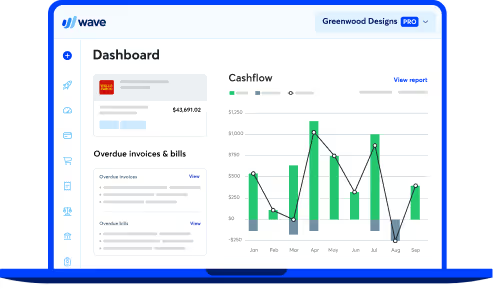
What is a C corporation? + Definition and benefits
Businesses of all sizes are made up of various structures, one of which is called a C corporation or C corp.
Compared to other businesses, like sole proprietorships and LLCs, C corps have their pluses and their minuses, all of which we’ll go over in this article. We’ll also discuss what a C corp is, how they work, how to form one, and their advantages and disadvantages.
What is a C corp?
Before we begin, let’s answer the question on everyone’s mind: what is a C corp?
A C corp is a type of legal business structure that’s treated and taxed separately from its owners.
Think of companies like Microsoft and Walmart. These types of companies are C corps, which means they’re owned by their shareholders and also have an unlimited number of investors—both of which have limited liability because they are legally separated from the business.
Now let’s talk numbers. 💰
C corps are able to pay corporate taxes on their earnings before they distribute the profits to their shareholders. And if they distribute profits? Those will be in the form of dividends, and individual shareholders will then be subject to personal income taxes on the profits they receive. This is called double taxation.
It’s not ideal, but it lets shareholders reinvest what they’ve earned post-taxes back into the company at a lower corporate tax rate. This is a perk, but more on double taxation in a bit. 👇
How do C corporations work?
In order for C corporations to work, they must abide by a few key rules of operation.
- Meetings: C corps have to hold a minimum of one meeting each year for their shareholders and directors. It must be a formal meeting where minutes are taken. This ensures that every aspect of operations can be assessed and viewed.
- Records and reporting: C corporations also have to keep the voting records of their directors, as well as a list of the owners' names and their ownership percentages. They also have to file annual reports and financial statements, including financial disclosure reports.
- Bylaws: C corps have to have their bylaws displayed at the location of their primary business.
And let’s not forget double taxation. C corps must succumb to this tax obligation, where taxes are paid at the corporate level and at the shareholder level. To break it down, this means the corporation first has to pay corporate income taxes on their profits, and once those profits are dispersed, each shareholder also has to pay taxes on the dividends at the individual income tax level.
How to form a C corp
Think you might be in the business of creating a C corp? Good news: doing so is quite similar to other types of business entities. Here’s how it works:
- Choose a name: First you’ll pick and register a business name. Just make sure no one else has it.
- File articles: After you’ve chosen your name, you’ll file articles of incorporation with your Secretary of State. Do so in accordance with the laws of your local state.
- Offer stock: Once you’re a C corp, you have to offer stock to shareholders, the owners of your corporation.
- File Form SS-4: This gets you your Employer Identification Number, aka EIN. Depending on where your business is located, you’ll have to submit state, income, payroll, unemployment, and disability taxes.
- Establish a board of directors: Your new board of directions will oversee the management and operation of the business. This also helps to make sure everything is being done in an ethical way, and helps if any conflicts arise.
Advantages of C corporations
Being a C corp has its advantages, especially to the business owners—i.e. your shareholders.
For example, C corporations limit the personal liability of their owners, board of directors, and their employees. That means whatever financially happens to the business, there’s no obligation from the parties listed above to cover the cost with personal debt.
Another perk? C corps keep going, even as owners and management change. That said, when changes happen, C corps have to register with the Securities and Exchange Commission (SEC) if they’re selling securities.
Next is the opportunity to expand. C corps have the ability to offer shares of their stock, which can help the business secure capital to fund pay for new projects or expand into new markets.
Disadvantage of C corporations
Unfortunately, not everything about C corporations is a perk—but what in life is?
For instance, when forming a C corp, it can be pricey to file articles of incorporation. C corps also have extra regulatory eyes on them, which can cause a rise in legal expenses.
And don’t forget about double taxation. The profits of a C corp are taxed twice. First on the corporate level, when the C corp files income taxes, and then again on the individual level when profits are distributed to shareholders.
Another disadvantage? The shareholders of a C corporation aren’t able to deduct business losses on their individual tax returns.
Pros and cons of C corps
The bottom line on C corporations
C corporations are a type of business structure that’s treated and taxed separately from its owners. It offers shareholders limited liability, which for one, means that if anything were to happen to the business, its owners have no legal responsibility to go into their own debt to cover costs.
C corporations are also double taxed, both on the corporate level and on the individual level. So, while there is the perk of shareholders getting a cut of the profits in the form of dividends, they have to pay taxes on them again at the individual level.
Lastly, forming a C corp isn’t (that) hard! While it may be costly—up to $5,000 or more depending on legal support—the steps are similar to setting up any other business. This means organization is key.
And not just at the start, but as you grow your business (and those profits).
C corporation FAQs
C corp vs S corp: what's the difference?
Although C corps and S corps are similar in that they limit the liability of their owners, a main difference is around taxation. C corporations are taxed twice, but S corporations are considered to be a pass-through entity. This means they can be used to pass their profits and tax credits back to their shareholders without taxing on both levels of corporate income and individual income.
How are C corporations taxed?
C corporations as a whole pay their taxes at the entity level: this is a flat 21%. But remember: once profits in the forms of dividends are shared with owners, those get taxed on the individual level.
What is the difference between an LLC and a C corp?
There are a few differences between an LLC and a C corporation. While an LLC (aka a limited liability company) is similar in that it limits the liability of its owners, it’s more suited to companies that are structured as sole proprietorships and small businesses.
Another difference is that LLCs don’t fall under double taxation rules. The profits of an LLC are not taxed directly. Instead they’re passed on to a business’s members.
How much does it cost to form a C corporation?
This depends on a few things, like what state you are filing articles of incorporation and the legal fees involved. As a general guideline, state filing fees fall between $50 to $500, but confirm with your local secretary of state to find out the amount for your area.
Other fees, like attorney fees, typically range from $500 and $5,000 for the entire process, depending on how much you use their services. Alternatively, you can opt for an online legal service which is lower in cost.
(and create unique links with checkouts)
*While subscribed to Wave’s Pro Plan, get 2.9% + $0 (Visa, Mastercard, Discover) and 3.4% + $0 (Amex) per transaction for the first 10 transactions of each month of your subscription, then 2.9% + $0.60 (Visa, Mastercard, Discover) and 3.4% + $0.60 (Amex) per transaction. Discover processing is only available to US customers. See full terms and conditions for the US and Canada. See Wave’s Terms of Service for more information.
The information and tips shared on this blog are meant to be used as learning and personal development tools as you launch, run and grow your business. While a good place to start, these articles should not take the place of personalized advice from professionals. As our lawyers would say: “All content on Wave’s blog is intended for informational purposes only. It should not be considered legal or financial advice.” Additionally, Wave is the legal copyright holder of all materials on the blog, and others cannot re-use or publish it without our written consent.


























